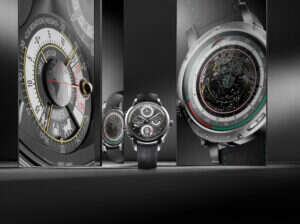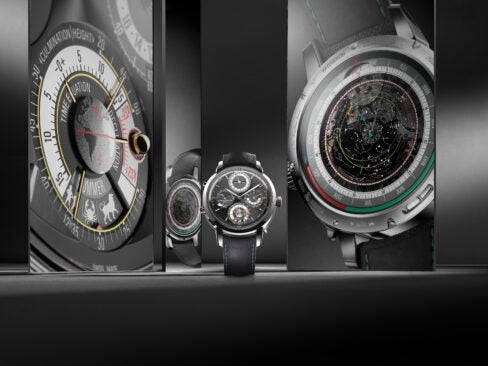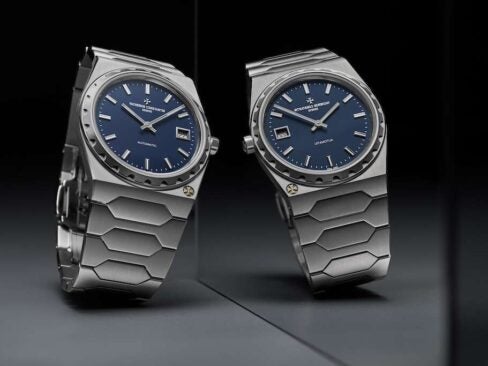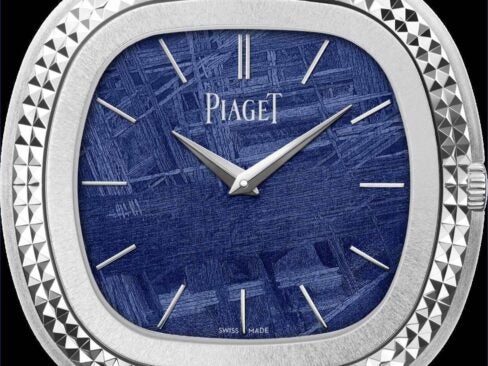Breva founder Vincent Dupontreué was born outside Paris in 1977 with an entrepreneurial spirit that had him making and selling bracelets on the beach in Corsica during holidays when just 11 years old and building and selling skateboard ramps with his brother at 13. From there, according to his biography, a job working in a bespoke men’s clothing store at 18 led to the position of sales manager at Ermenegildo Zegna. Not contented, Dupontreué decided he wanted to run his own boutique, but when that didn’t come to pass, a 22 years old he set up his own fashion brand “Vincent Dupontreué”.
After seven years he sold the brand, completed an MBA in Lausanne, Switzerland, and ran an art gallery.
Only 33, a beautiful weekend on Lake Como in Northern Italy provided both the inspiration for the name Breva (La Breva is a warm southern wind contributing to the mild micro-climate around Lake Como) and the idea of creating a mechanical timepiece that forecast the weather.
After three years of research and development, in 2013 the whiz kid launched Breva with the Génie 01, the world’s first mechanical wristwatch displaying time, altitude, weather forecasting barometric pressure and power reserve. This was followed in 2014 by the Génie 02, which features a fully functional precision mechanical altimeter, as well as time and power reserve indications.
The Breva Génie 02 Air combines a beautifully crafted mechanical timepiece with the practicality of a fully functional, high-performance altimeter. Whether your elite traveler passion is paragliding, flying, skydiving, hang gliding, mountain climbing, skiing, or enjoying the fresh air and stunning views that high altitudes offer, the Génie 02 Air can tell you current alititude.
The proprietary movement, much of which can be fully appreciated through the open dial and display back, was developed exclusively for Breva by award-winning movement constructor Jean-François Mojon (Chronode). The Génie 02 Air is 100% Swiss-made, from inception to realization.
Genie 02 catalog – English  The dial side of the timepiece is dominated by a sub-dial at 8 o’clock displaying hours and minutes, and the precision altimeter sub-dial at 2 o’clock displaying meters (or feet). Arcing around the top of the dial is the large-scale altitude indicator, which displays up to 5,000 meters (or 16,400 feet), with small seconds below. At 4 o’clock, an indicator is revealed when the air valve is open or closed (it must be open to indicate the altitude). Below is the 65-hour power reserve indicator.
The dial side of the timepiece is dominated by a sub-dial at 8 o’clock displaying hours and minutes, and the precision altimeter sub-dial at 2 o’clock displaying meters (or feet). Arcing around the top of the dial is the large-scale altitude indicator, which displays up to 5,000 meters (or 16,400 feet), with small seconds below. At 4 o’clock, an indicator is revealed when the air valve is open or closed (it must be open to indicate the altitude). Below is the 65-hour power reserve indicator.
The Génie 02 Air is a limited edition of 55-pieces in titanium G5 and is available with calibrations in either meters or feet.
Génie 02 Air Details
High performance mechanical altimeter: paradoxically, an altimeter doesn’t really measure altitude at all: it measures air pressure. In 1928, German inventor Paul Kollsman revolutionized the aviation world when he invented the world’s first accurate barometric altimeter.
An air pressure altimeter is in fact a barometer developed specifically to display altitude rather than barometric pressure. Pressure in the earth’s atmosphere is a result of the weight of the air pulled down by gravity. The higher the altitude, the less atmosphere above, so less pressure is exerted.
Aneroid capsules: the aneroid capsules in the Génie 02 were especially developed to Breva’s specifications to optimize their precision and use in a wristwatch. The capsules are made from a special non-magnetic memory metal (a Breva-patented invention), which is lighter and stronger than aluminum and has twice the ductility of steel. The capsules are exposed for long durations to high temperature and pure oxygen to maximize thermal conductivity and oxidation resistance.
The Génie 02’s aneroid capsules were developed specifically for registering air pressure for altitude readings rather than barometric pressure, and are different from those used on the Génie 01.
 A lever, clearly visible on top of the aneroid capsules, transmits the combined height of the capsules through a complex system of gears and racks to the two precision, large-scale altimeter indications. The gearing for these two displays has been carefully calculated to optimize both precision and legibility.
A lever, clearly visible on top of the aneroid capsules, transmits the combined height of the capsules through a complex system of gears and racks to the two precision, large-scale altimeter indications. The gearing for these two displays has been carefully calculated to optimize both precision and legibility.
Adjusting for changes in air pressure: atmospheric pressure can change with weather, and this can affect altitude readings. When bad weather approaches, air pressure can fall, causing the altimeter in the timepiece to confuse this decrease in pressure with an increase in altitude.
In order to compensate for weather- or temperature-induced barometric pressure variations, the altimeter should be calibrated by using a known altitude or a known pressure value. A known altitude can typically be taken from a specific landmark on a topographic map. If a known altitude is not available, a known pressure value will suffice. Barometric pressure is measured several times per day and can usually be obtained from aviation weather reports.
Altitude has historically been measured using a calibrated barometer, which is essentially what a pressure altimeter is. A barometric altimeter measures air pressure, which decreases with increasing altitude due to less atmospheric pressure.
Flight Levels
A pilot must recalibrate the altimeter according to local air pressure at sea level, in order to take into account natural variations of pressure over time due to weather and temperature. If altimeters are not calibrated before flight, two aircraft could be flying at the same altitude even though their altimeters indicate that they are at different altitudes.
To ensure aeronautic safety, planes and air traffic controllers use flight levels, which is a nominal pressure altitude in feet divided by 100 and always divisible by 500 (so always ending in 0 or 5), rather than actual height above sea level. For example, 33,000 feet is referred to as “flight level 330”.
Actual altitudes above ground are not as important for flight safety as the difference in altitudes between planes. This difference can be determined from the air pressure at each craft, and does not require knowledge of the local air pressure on the ground.
Flight levels solve this problem by defining altitudes based on a standardized air pressure at sea level. All aircraft operating on flight levels calibrate to this setting regardless of the actual sea level pressure.
A second advantage of flying at a consistent flight level, rather than true altitude, is that an aircraft’s aerodynamic and engine performance depend on air pressure rather than its true altitude above ground or sea level. It is much easier to trim a plane to operate efficiently at a specific air pressure rather than altitude.











